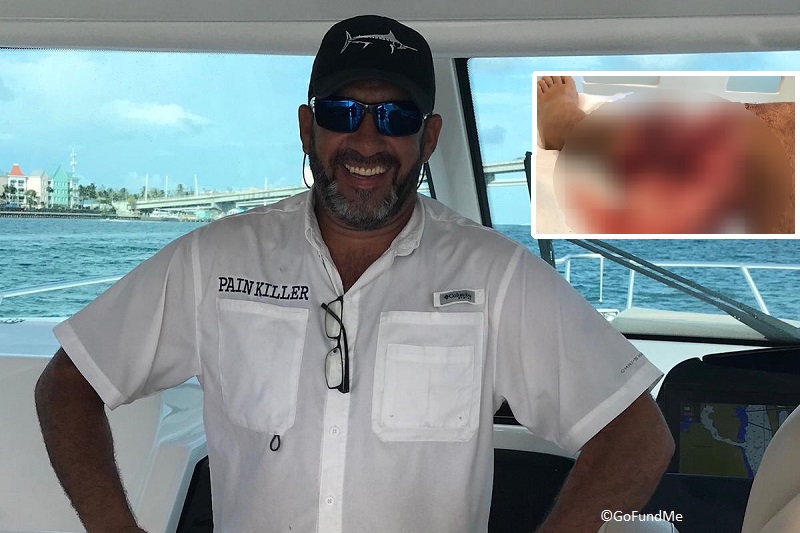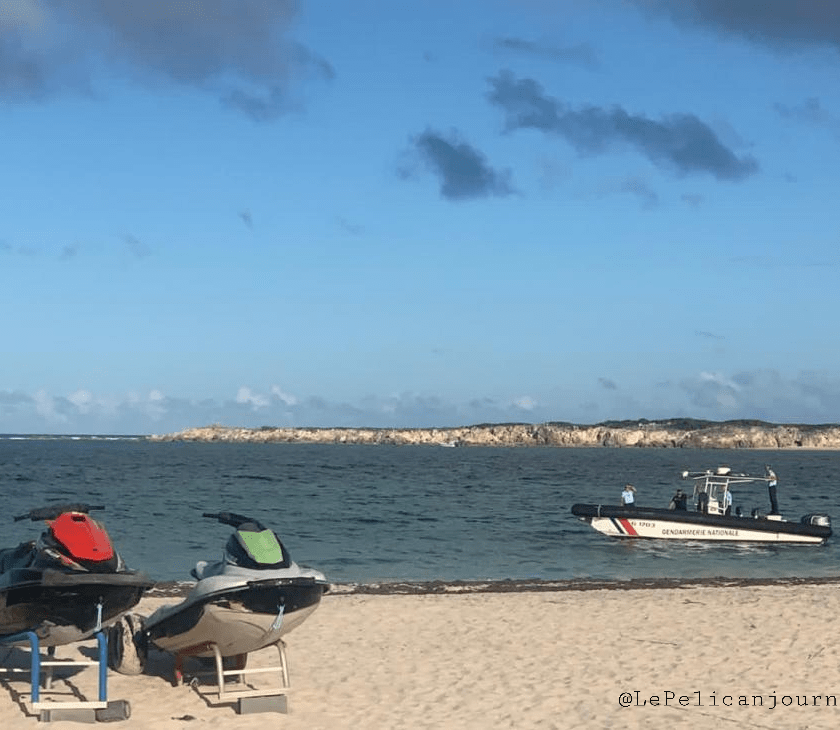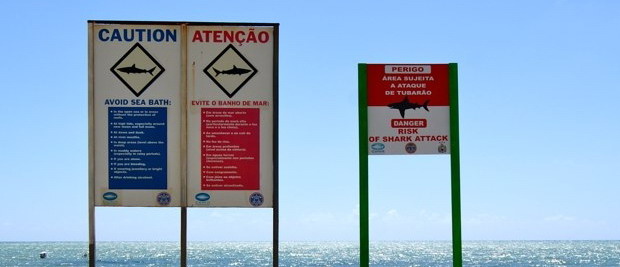A charter boat captain enjoying the waters in the Bahamas nearly lost his leg in a shark attack last month.

Salvador Ruiz, 50, was snorkeling off Waderick Wells Cay June 17 when he felt something grab his lower left leg. He may have thought he was stung by a jelly fish, but when the pain began, he realized it was a shark.
He was helped out of the water and taken to shore before being flown to the Jackson Memorial Hospital Ryder Trauma Center in Miami.
Ruiz has been through five surgeries thus far and will need more.
Friends set up a (graphic link) GoFundMe page to help the self-employed fishing guide and boat captain with his medical and living expenses.
“He lives very modestly, lives alone, and doesn’t have disability insurance coverage. Although his medical insurance will (for now) continue to pay his medical expenses, he has no other means of providing for himself or covering his day-to-day living expenses while undergoing medical treatment and rehab,” the page states. All proceeds from the campaign will be used to pay for personal expenditures not covered by medical insurance.
Initial reports indicate Ruiz identified the shark that bit him as a 6-foot reef shark. However, the large size of his wound reflects that typical from a bull shark.
Once his surgeries, skin grafts and 6 to 12 month-rehabilitation ends, Ruiz expects to be back on the water.
This is the fourth shark attack in the Bahamas this year.
An unidentified American tourist, 32, was bitten while snorkeling with two others off Guana Cay July 4. The group was anchored off Nippers Beach when the man was bitten.
College student Jordan Lindsey, 21, died after being attacked by a shark June 26.
Lindsey and her mother Kami were on an excursion with the company Sandy Toes off Nassau when a shark took off her leg. Her mother attempted to pull her to shore when the large tiger shark attacked again.
The family released a statement that said the excursion company provided no medical treatment to Jordan and lacked basic first aid supplies.
Spearfisherman Jonathan Hernandez was bitten on the leg by a shark June 21.
The boat captain and professional fisherman was returning to the surface with a freshly killed hogfish, when a shark grabbed his left leg. He was able to fight the shark off, but sustained a severe injury.
Marine biologist Dr. Greg Skomal, who runs the Massachusetts Shark Research Program, and National Weather Service meteorologist Joe Merchant have developed a theory that could be linked to shark activity at the islands.
The two theorize that sea breeze activity, along with rapid increases in wind speed, could play a role in bringing marine life closer to the shore. Essential small fish move closer to shore and are followed by larger predators.
While the number of shark incidents is higher than expected, thousands of visitors to the Bahamas each month never see a shark.
All water users should know the risks when entering the water and follow basic safety protocols. The first and most important of which is knowing how to swim. More people die each year from drowning than are every bitten or killed by a shark.
Avoid using the water during sunrise and sunset. Sharks are active during these times and may have a harder time distinguishing humans from prey. Avoid swimming near fishing activities and always avoid murky water, especially where fresh and saltwater meet.
Beach goers in the United States and Australia may benefit from the shark reporting app Dorsal. The app uses location-based mapping to share information on shark sightings and allows users to report sightings directly.
Tracking Sharks also recommends carrying a first aid kit with tourniquet.
There have been a total of 46 shark attack bites (43 with injury, 11 of which are considered provoked*) publicly reported and verified in 2019.
All locations have been reported on the 2019 Shark Attack Tracking Map.

